427 Squadron 6 Group
Leeming, Yorks
Acheres June 7, 1944 23rd
OP
As written by Gordon M. Waddell
Acheres- an important railway junction, main lines being
used by the Germans to bring up reinforcements to the front lines just
after “D” Day.
We were briefed to go in at 6000 ft. with the usual +
or – 2 min. T.O.T. (time on target). There were only a few A/C (aircraft)
detailed for the target, we were to leave the main bomber stream just before
Acheres and would be on our own for night fighters.
We were on our bombing run, the bomb-aimer (Farr) was
up in the nose over the bomb sight when we were hit and the starboard wing
caught fire. I was in the navigator’s position working on a course
for the pilot to fly off the target when the pilot (Foster) said over the
intercom “This is it gang, bail out!” I looked out and the starboard
wing was a mass of flames and the flames spreading down the right side
of the A/C. There was probably only seconds between the hit and the
bail out order.
Farr didn’t have his parachute with him in the nose, he
always left it by my table when he went up to bomb. I passed his
chute to the flight engineer and he handed it up to him. I kicked
open the escape hatch below my navigation table, snapped my own chute detonated
the “H2S” and “G” box (navigation aids, supposed to be top secret).
They were fused to blow up. I glanced at my altimeter as I headed
for the escape hatch, it was at 4000 ft. and unwinding fast. The
wireless operator (Carter-Edwards) jumped just before me.
I don’t recall making the regulation count but recall
thinking when I snapped my chute on that “this thing should work” as I
had had my chute repacked a few days before. My chute opened nicely
and the burning A/C seemed to circle slowly off to the left. I could
see the Seine River to my far right, a high tension power line that looked
as if it would be in my line of drift and a F/W 190 (German night fighter)
circling the area. The F/W kept circling the area. I could
see some of the other chutes in the glow of the fire from the A/C.
It had hit the ground a few minutes after we jumped and the flames lit
up the countryside for miles around.
The F/W left us alone and I missed the power line, got
lined up to land facing downwind but at the last few seconds there was
a house right in front of me. I landed on the roof, my chute kept
going and dragged me over the ridge and I was swung off the other side
by my chute like a pendulum and slammed into a brick wall that was built
around the house. There was a slit trench below the wall that I fell
into - a great place to hide my chute, which took a few minutes, then out
of the trench and over the wall and off into the countryside.
I had a small pocket compass and headed off NW (England
was in that direction). I went cross-country, keeping off the main
roads. At daylight I hid out in a small clump of woods in a hayfield
and decided to stay put in case the German patrols were out looking for
us. My right leg had taken the slam into the brick wall and was quite
sore and swollen, black from the hip to the toes, so I decided come evening
I would have to get help. When on Ops we carried a small escape packet
that would fit in the breast pocket of our battle dress jacket. The
packet contained a compass, maps and money of the area you would be flying
over, a razor, soap, needle and thread, a plastic bag to collect water
in, chlorine tablets to treat the water (I had crossed a creek in the night
and stopped to fill the plastic bag) and Horlock tablets which were supposed
to give you enough nourishment to keep going for a few days. The
problem was trying to convince your stomach that a horlock tablet was the
equivalent of a full meal.
When evening came I walked down to a small country road
I had been watching all day - it hadn't had much traffic on it so was well
off any of the main thoroughfares. A young chap came along on a bike
and I stopped him and told him I was a Canadian airman and had been shot
down the night before. He listened and was as scared as I was, jumped
on his bike without saying a word and took off like a bullet. I thought
I had better go too, couldn’t travel very fast on account of my leg, looked
back a short time later to see if I was being followed and sure enough
a man was running after me, and then I noted that further behind him a
woman and child were also following, so I decided it couldn’t be too bad.
I was in an open field so I waited for him to come up to me. He eyed
me keenly for a few seconds and then held out his hand and said "camarade".
That was my contact with the French Underground system.
We started back in the direction I had come, met up with
his wife and daughter but they stayed away back from us as we started off
to the village of Jambville where they lived, a village which was well
treed, almost a forest on one side of the road. As we came
to the village he stopped, looked me over carefully (I had cut off my insignia
the night before as I had planned to evade capture if at all possible),
my hair was rumpled and I had no cap, so he pulled his cap off, rumpled
up his hair as well, started to whistle a tune and off we went. When
we entered the village and started down the street I thought I was in for
it -- there were Germans everywhere I looked under the trees. It
was getting dark and they were loafing about and paid no attention to us,
my escort was whistling a tune and seemed to be enjoying himself – we were
out for an evening stroll. We arrived at his house where I
had something to eat and drink and a chance to rest up.
Later during the night someone else came for me and I
was taken to the village priest’s home. He was a Swiss. I was
there for almost a month. A male nurse came everyday or so to bathe
and massage my leg. My next stop was with a Polish couple.
They had a walled in garden where I could walk about for exercise to get
my leg loosened up again. I think he was fairly high up in the underground
system. German soldiers, probably with a Polish connection, used to come
to their house some evenings. His wife would come up to my room and
warn me to be quiet as there were Germans downstairs. One evening
she came running up to my room, quite excited and waving a butcher knife.
I couldn’t understand her excited Polish-French but knew she wanted me
to come with her, so we went outside where she had a sheep tied up.
She handed me the knife and being a farm boy, I knew what to do.
We had fresh mutton for the next few days. Food always seemed fairly
plentiful in the country. Paris was a different story though.
My next stop was where they got four of the crew together
again: Foster (pilot), Donnan (tail gunner) and Philliskirk (flight engineer).
We had a chance to talk about our experiences and what had happened to
the A/C. The consensus of the four of us was that it was light flak.
Donnan hadn’t seen any enemy night fighters but Foster said there had been
an explosion in front of us. (History states there were only three
aircraft on the target and one of them reported a hole in the bomb bay
door on return to base.)
In talking with Tommie Farr (bombardier) in later years,
he also saw the F/W 190 cruising the area. It could have been one
of their upward firing cannon that hit us on the starboard wing.
If the fighter was beneath us the gunner wouldn’t be able to see him and
would explain the hole in the other crew’s bomb bay door. (It wasn’t
until after the war that we knew some of the German fighters were equipped
with an upward firing cannon.)
It was our third night in a row and perhaps we were a
bit tired and not as vigilant and sharp as we should have been.
Our next move was to Paris. I suppose the philosophy
was more people less chance of a stranger being spotted. We were
driven there by a red-headed Irishman who was in the junk business.
He had an old truck that was loaded with junk. There was a tarp over
it so we were out of sight. Part of his load were the crank shafts
that he had salvaged from our Halifax. The chrome on the cranks was
valuable. Our trip into Paris was uneventful, one of the bridges
we crossed over had guards on it, but they waved him through so he must
have been a familiar traveller on the route he took. Our instructions
were that if we were stopped and searched, we would say we had flagged
him down on the road and asked for a ride to the city.
We were delivered to “Henry”, a member of the Paris Underground
system, on our arrival and taken to a hideout. We were at three different
locations while in Paris, generally going out the back door when the Gestapo
were coming in the front one. It was an interesting experience keeping
ahead of them. Shortly after my arrival in Paris I was to get a French
identity card. My escort arrived with two bicycles and off we went
to a photographer. During the journey we pulled up to a stop light
and two German soldiers, also on bikes, pulled up beside me. I glanced
over at my escort and he was laughing his head off. The lights changed
and we proceeded to the photographers and then to the police station where
one of the police officers (a member of the underground group) had procured
an official I.D. card all signed and ready for the photo and seal and my
fingerprint.
We remained in Paris until the US Army rolled in.
I was at the “Arc de Triumph” when they pulled up and contacted a U.S.
officer who told us where to report - “The Reynolds Hotel”. Then
it was back through the lines to the coast, an L.C.T. across the channel
and the R.T.O. up to London for interrogation.
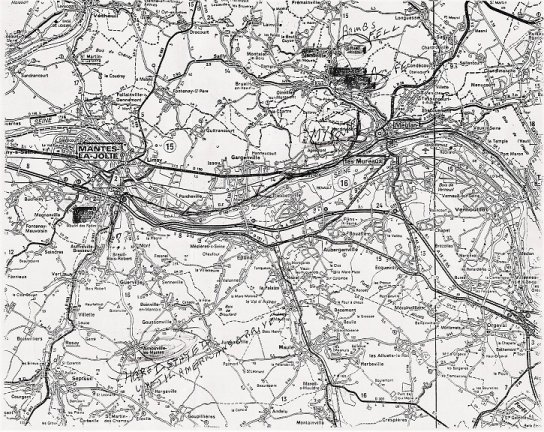
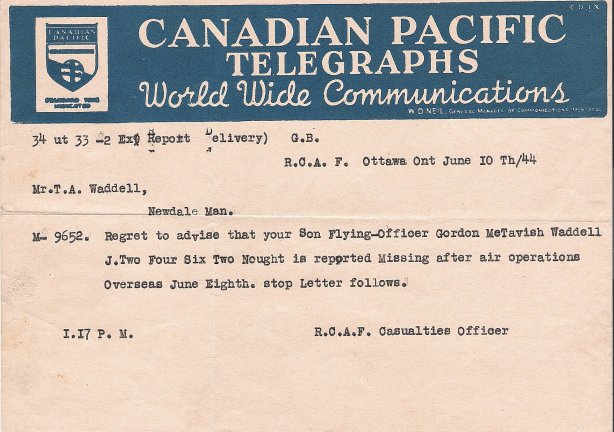
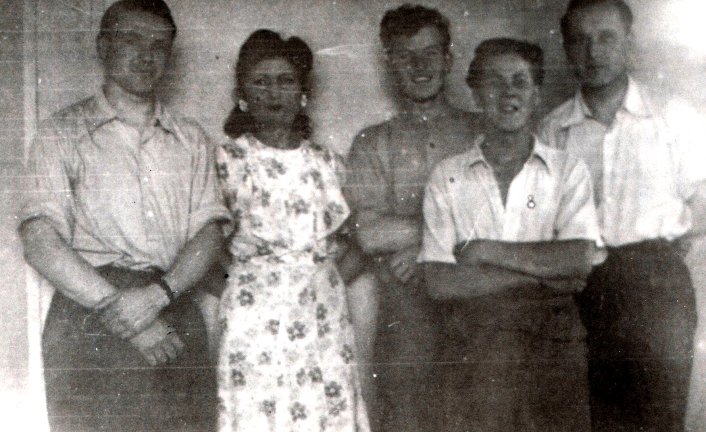

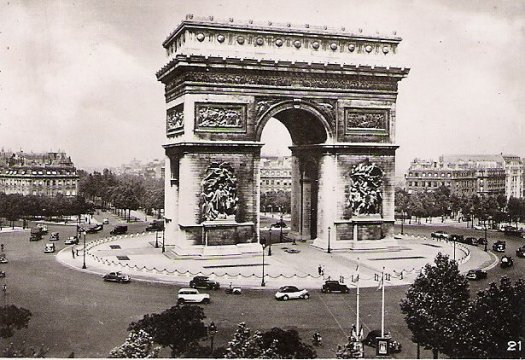
![]()




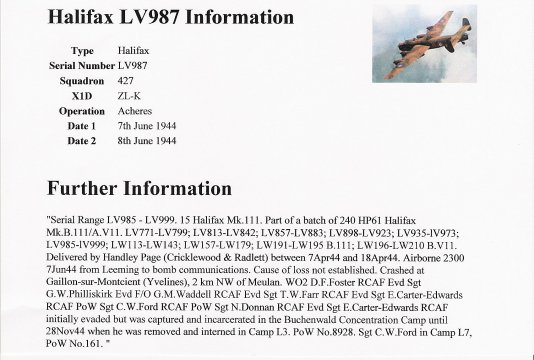
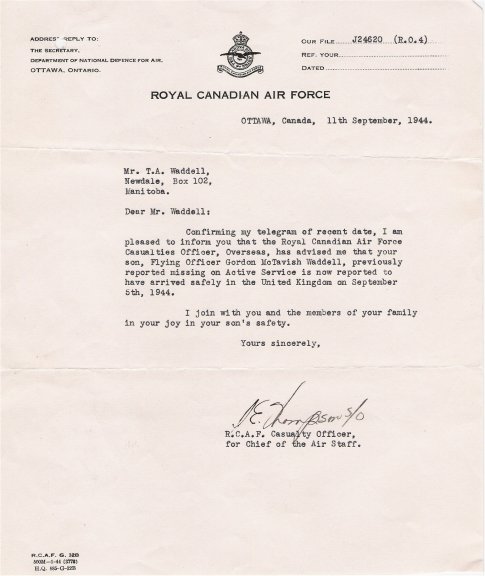
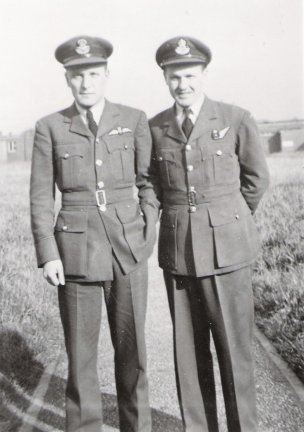
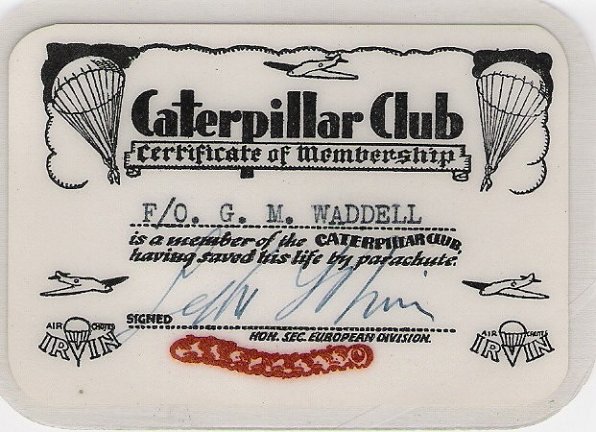
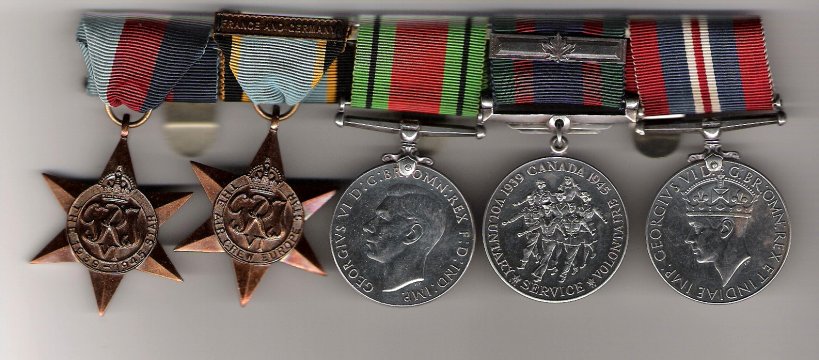
![]()
![]()
![]()
![]()
![]()